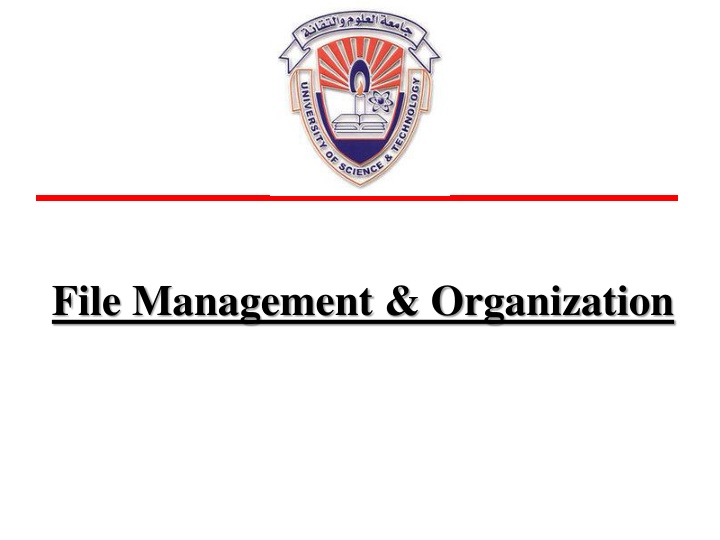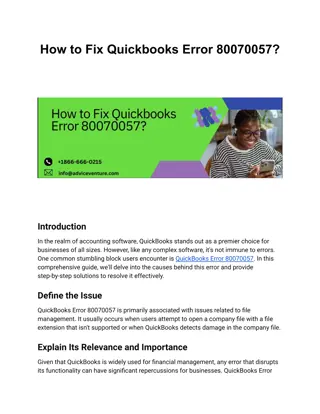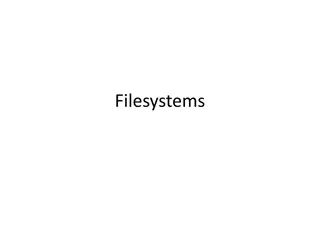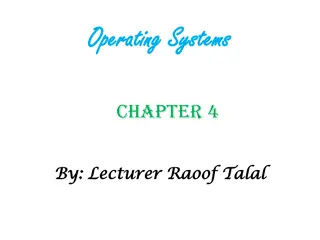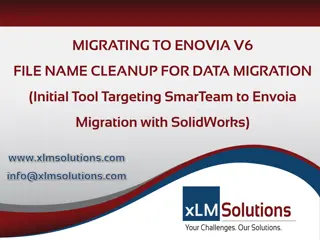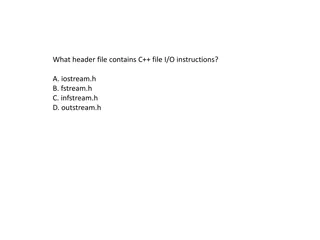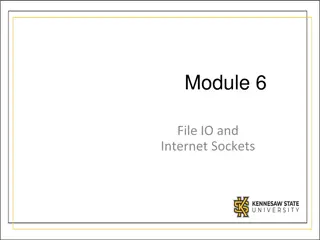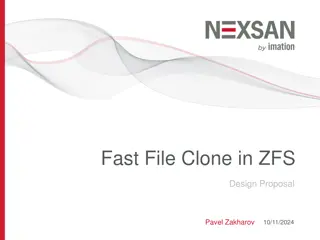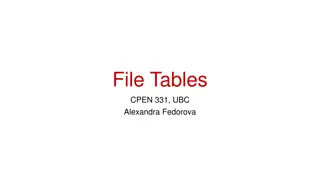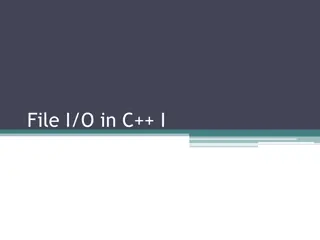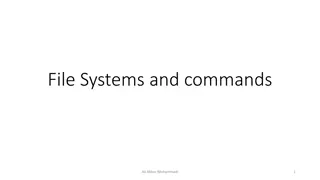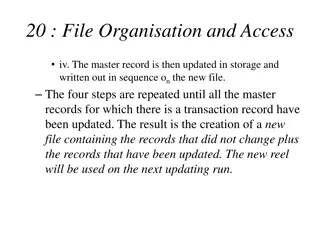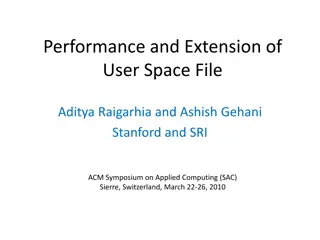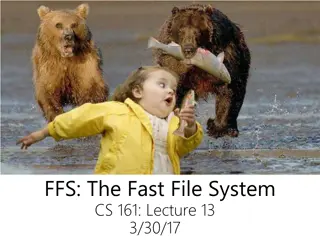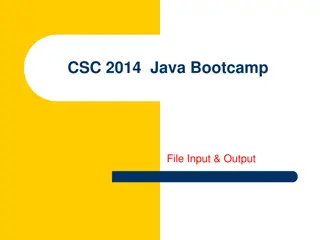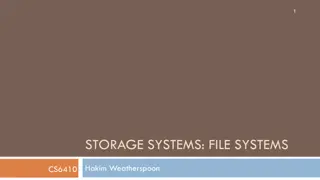Introduction to File Management & Organization
Discover the fundamental concepts of file management, organization, and storage systems. Explore data processing, file structures, and the importance of files in storing various types of information. Gain insights into the role of secondary storage devices and the organization of data within files. Dive into the world of computer storage and understand the significance of efficient file management for data processing.
Download Presentation

Please find below an Image/Link to download the presentation.
The content on the website is provided AS IS for your information and personal use only. It may not be sold, licensed, or shared on other websites without obtaining consent from the author.If you encounter any issues during the download, it is possible that the publisher has removed the file from their server.
You are allowed to download the files provided on this website for personal or commercial use, subject to the condition that they are used lawfully. All files are the property of their respective owners.
The content on the website is provided AS IS for your information and personal use only. It may not be sold, licensed, or shared on other websites without obtaining consent from the author.
E N D
Presentation Transcript
LESSON PLAN LESSON PLAN Course : File Management & Organization Credit : Credit Hours (Lecture + Tutorial + Lab) Lecturer : Ebtisam Abaker Adam Assessment : Total marks 100% (can be changed) 30% 70% Coursework (Lab +Test+ project) Final Exam
LESSON PLAN (cont) LESSON PLAN (cont) Lecture Notes : Available References for course: File Structures, An Object-Oriented Approach with C++, by Michael J. Folk, Bill Zoellick and Greg Riccardi
Lecture 1 Lecture 1 Chapter 1 Introduction To File Management & Organization 4
Contents of Lecture: Data processing File and Computer Storage File Structures File Organization File Management File Managers
Data processing Storage of data Organization of data Access of data Processing of data (Hard disk). The processing of data after storage, organization and accessing. Data is saved within the files, and then the files are saved in storage devices, that are either primary storage devices (RAM) or Secondary storage devices Secondary storage? We can use Sequential or Direct Access. Deal with how can we organize files at Primary and
File and Computer Storage What is File ? File is a collection of data placed under secondary or non-volatile storage. Secondary storage Examples: hard disk, magnetic tape, optical media .. Computer Storage can be secondary storage or main memory.
Computer Storage File storage systems have many moving parts Files will store here Why is file storage so slow? A.mp3 first.java mo.flv
Why do we need files? Files are the only suitable way to store sizable amounts of certain types of information: pictures, music, and video are some examples. Most operating systems are too complex and large to be fully loaded into memory. Databases are everywhere. Data backup and archiving.
File Structures: A file has two Structures: 1. Logical structure(Logical file): The logical structure of a file is how programmers see it (text, image, data file, .). 2. Physical structure(physical file): The physical structure of a file is how it stored on the secondary storage is.
File Organization Unorganized Organized
File Organization Logical file Organization methods: Heap, indexing, hash . Physical file Organization methods: Organizing Track by sectors Organizing Track by Blocks File Organization methods must provides: Fast Access Time good space Utilization
File Management File Management Involves techniques for: Preparing/formatting storage media to store data. Allocating storage space and addressing. Managing free spaces.
File Managers: Files are managed by System Software: OS (Operating System) DBMS (Data Base Management System)
Course objectives: To get the information from the disk with as few disk accesses as possible. To group related information so that we can get requested info with only one trip to the disk
